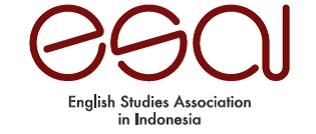STUDENTS’ POLITENESS STRATEGIES IN ONLINE LEARNING CLASSROOM
Kata Kunci:
politeness strategies, online learning.Abstrak
In recent years, online learning platforms have grown rapidly and become one of the most common choices in the world. This study aims to reveal the politeness strategies chosen by students in the international online classroom with multicultural students in different countries. The interaction mostly happens on teacher-student discussion, peer-to-student feedback, and individual and class discussions in which the communication is based on writing format. This study uses a qualitative descriptive method and uses the theory of politeness from Brown and Levinson. The research results revealed that the most widely used strategies were positive politeness strategies (49%), negative politeness strategies (35%), off record strategies (8%), and bald-on record strategies (8%). The major factors that influence the use of these strategies are training and learning contracts that begin before class.Referensi
Almoaliy, M. (2018). Greetings as a Politeness Strategy in Distance Online Learning. Linguistics and Literature Studies, 250-266.
Anggraeni, S. (2021). Politeness Principles In “Persuasion” Movie. International Journal of English Linguistics, Literature, and Education (IJELLE), 3(1).
Biesenbach-Lucas, S. (2007). Students Writing Emails To Faculty: An Examination Of E-Politeness Among Native And Non-Native Speakers Of English. Language Learning & Technology, 59-81.
Biggs, J., & Watkins, D. (1996). The Chinese Learner in Retrospect. The Chinese Learner: Cultural, Psychological and Contextual Influences, 45-68. Brown, P., & Levinson, S. (1987). Politeness. Cambridge: Cambridge University Press.
Bruce, M., Krista, E. D., & Richard, E. (2011). A politeness effect in learning with web-based intelligent tutors. https://www.sciencedirect.com/science/journal/10715819, 70-79.
Creswell, J. W. (1994). Research Design: Qualitative and Quantitative Approaches. Thousand Oaks: Sage Publications.
Denzin, N., & Lincoln, Y. S. (1994). Handbook of Qualitative Research. California: Sage. Himawan, R. (2022). Deviations of Language Politeness among Teachers and Students in Online English Learning in 9th Grade at SMP N 1 Pandak. International Journal of English Linguistics, Literature, and Education (IJELLE), 3(2).
Hinze, C. G. (2012). Chinese Politeness is Not about “face”. Journal of Politeness Research, 11-27.
Jiang, X. (2010). A Case Study of Teacher Politeness in EFL Classroom. Journal of Language Teaching and Research, 651-655.
Keith, A. (1998). Meaning and Speech Act. Melbourne: Linguistic Department, Monash University.
Kyong, J. K., & Bonk, C. J. (2002). Cross-cultural Comparisons of Online Collaboration. Journal of Computer and Mediated Communication.
Lakoff, R. (1973). The Logic of Politeness; or minding your p’s and q’s. Chicago Linguistic Society, 292-305.
Leech, G. (1983). Principles of Pragmatics. Essex: Longman.
Leech, G. (2015). Prinsip-Prinsip Pragmatik. Jakarta: Universitas Indonesia.
Leech, G., & Larina, T. (2010). Politeness: West and East. Journal of Russian Pragmatics, 1-34.
Liang, G., & Han, J. (2007). https://www.asian-efl-journal.com/main-editions-new/a-contrastive-study-on-disagreement-strategies-for-politeness-between-american-english-mandarin-chinese/. The Asian EFL Journal.
Lim, D. H. (2004). Cross Cultural Differences in Online Learning Motivation. Education and Media International, 163-175.
Liyana, C. I. (2016). A Discourse Analysis on Short Commercial Advertisement. Jurnal Ilmu Komunikasi, 40-69.
Locher, M. (2004). Power and Politeness in Action: Disagreement in Oral Communication. Berlin: Mouton de Gruyter.
Meade, R. (1978). Language Change in this Century. The English Journal, 13-43.
Murni, M. (2019). The use of politeness strategies in the classroom context by English university students. Indonesia Journal of Applied Linguistics, 597-606.
Mulaiawan, A., Megah, S. I., & Razali, N. A. (2021). A Politeness Strategies Used by Indonesian Journalists on Racism Issue. International Journal of English Linguistics, Literature, and Education (IJELLE), 3(1).
Ning, W., Lewis, J., Richard, E., Paola, R., Erin, S., & Heather, C. (2008). The politeness effect: Pedagogical agents and learning outcomes. International Journal of Human-Computer Studies, 98-112.
Nurkhamidah, N. (2020). English GGD Teachers’ Voice in the Use of ICT for Teaching English (Barriers and Strategies). International Journal of English Linguistics, Literature, and Education (IJELLE), 2(1), 26-34.
Parker, F., & Riley, K. (2014). Linguistics for Non Linguists. Singapore: Pearson. Purnomo, W. A. (2019). Politeness Strategies in Teacher-Student Interaction. Language and Education Journal.
Ramadhan, A. (2021). An Analysis of English Speaking Practice through Online Learning for Students (Case Study to The Students Majoring in Management Class 64.1 H. 05 and 64.1 G. 05 Kaliabang Branch University of Bina Sarana Informatika). International Journal of English Linguistics, Literature, and Education (IJELLE), 3(2).
Robinson, B. (1999). Asian Learners, Western Models: Some discontinuities and issues for distance educators. The Asian Distance Learner, 33-48.
Shahrokhi, M., & Bidabani, F. (2013). An Overview of Politeness Theories: Current Status, Future Orientations. American Journal of Linguistics, 17-27.
Simon, S., & Decija-Cartis, D. (2015). Analysis and Classification of Directions in Written Advertisements. Dubai: 2nd Global Conference On Linguistics And Foreign Language Teaching, Linelt-2014.
Susilo Adi, S. S. (2020). English language education students’ intercultural sensitivity in Cross Cultural Understanding subject. International Journal of English Linguistics, Literature, and Education (IJELLE), 2(1), 57-65.
Sugianto, A., Denarti, R., & Agung, I. (2021). Uncovering the anti-Islamic sentiment in The New Yorker cover issued on July 21, 2008: A semiotic analysis. International Journal of English Linguistics, Literature, and Education (IJELLE), 3(1), 44-54.
Sulu, A. (2015). Teacher’s Politeness in EFL Class. International Online Journal of Education, 216-221.
Trihanto, A. (2022). An Analysis on Directive Speech Act Found in Jumanji: The Next Level Movie Directed by Jake Kashan. International Journal of English Linguistics, Literature, and Education (IJELLE), 4(1), 13-24
Tanaka, N. (1988). Politeness: Some Problems for Japanese Speakers of English. JALT Journal, 82-102.
Werkhofer, K. (1992). Traditional and Modern Review: the social constitutions and the power of politeness in language. Berlin: Mount De Gruyter.
Widayati, M. (2020). The Uses of Honorifics by President Candidate in The Campaign News Text on National Newspapers. International Journal of English Linguistics, Literature, and Education (IJELLE), 2(2), 116-130.
Wiles, E. (2020). Translating “Interjections, Exclamations dan Phatic Expressions” from Indonesian Literature into English. International Journal of English Linguistics, Literature, and Education (IJELLE), 2(1), 1-25.
Xiaojing, L., Shijuan, L., Seung-hee, L., & Richard, J. M. (2010). Cultural Differences in Online Learning: International Student Perceptions. International Forum of Educational Technology & Society, 177-188.
Yanti, R. (2017). An Analysis of off record strategies reflecting politeness implicature in “Oprah Winfrey” Show. Jurnal Arbitrer, 52-57.
Zhang, J. (2007). A cultural look at information and communication technologies in Eastern education. Education Technology Research and Development, 301-314.









